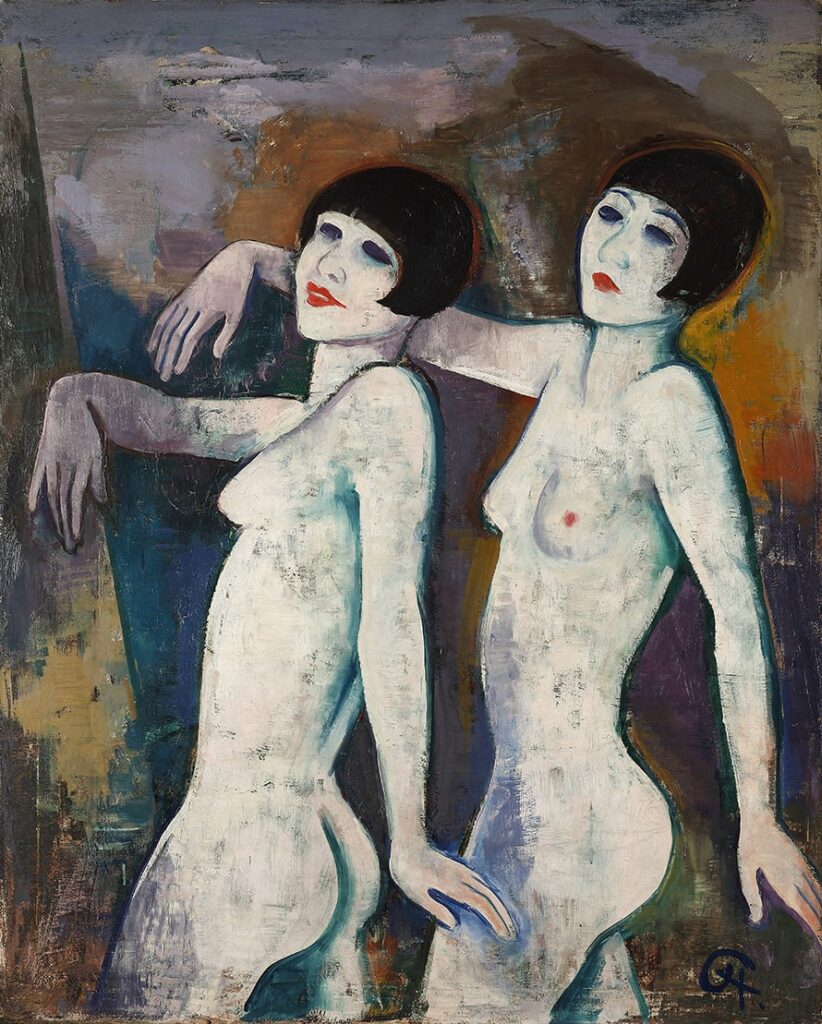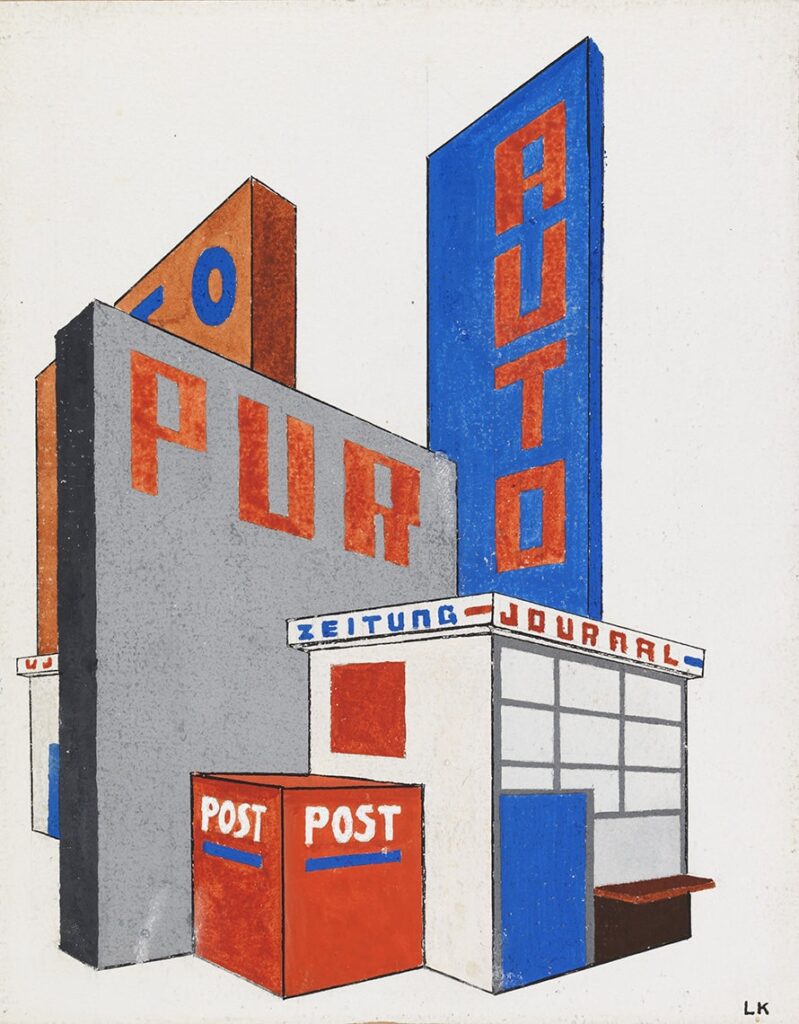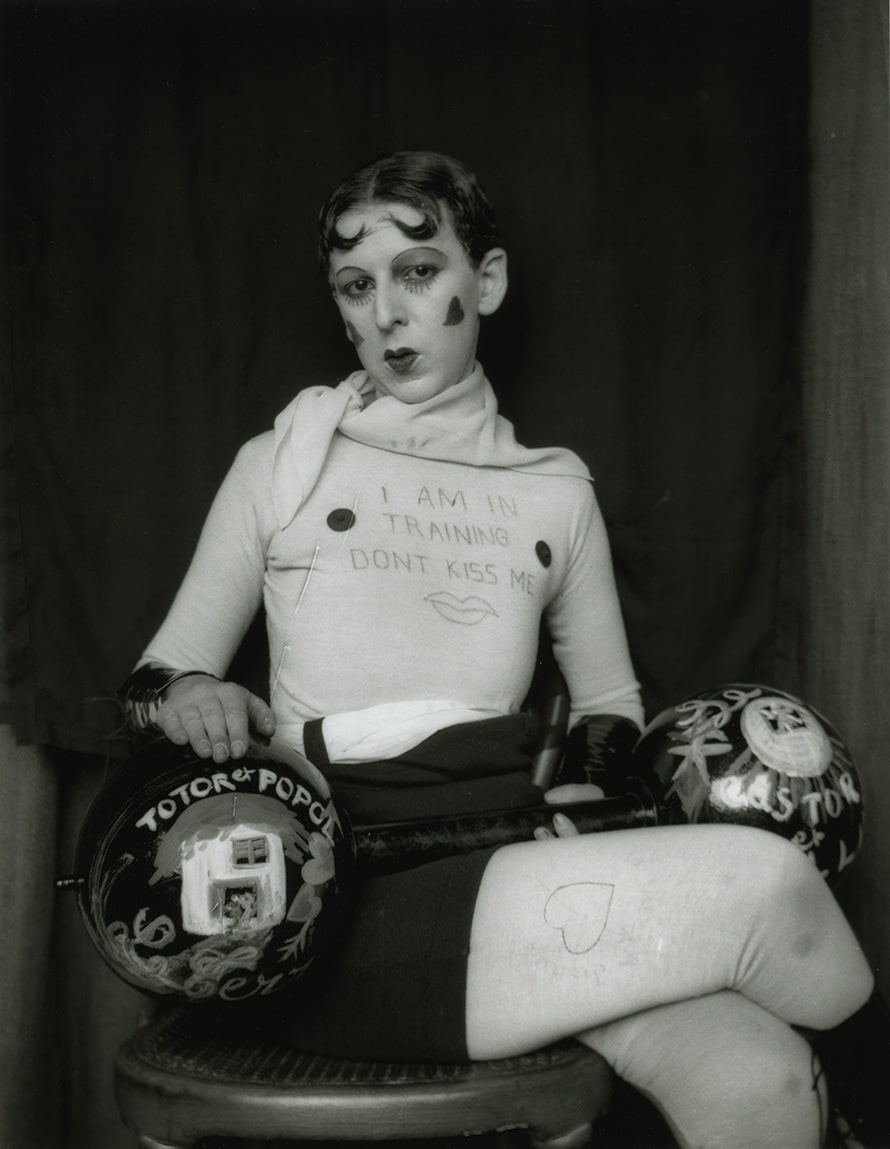The Bundeskunsthalle in Bonn is currently showing the exhibition “1920s! In the Kaleidoscope of Modernism”. The 1920s are considered a period of upheaval and experimentation in Western modernism. The simultaneity and radicality of this epoch still lends it a remarkable topicality in the 21st century and forms the starting point of this exhibition. Like a kaleidoscope, the variety of different images and voices are assembled into ever new constellations, which are intended to sharpen the eye for the uniqueness of the events as well as for the analogies to today.
Img. above: Claude Cahun, self portrait (I AM IN TRAINING DON’T KISS ME) 1928 Photo © Courtesy of the Jersey Heritage Collection
On the one hand, the decade is marked by a deep brokenness; on the other hand, it is gripped by an unbroken belief in progress and an unprecedented surge of innovation in all areas of society (culture, science, economy and politics). The word NEW is becoming the ubiquitous buzzword of the era. Although trend-setting developments already began before 1900, they only really came to fruition decades later – unleashed by immense acceleration and international interdependencies.

Art and culture also self-confidently claim to want to help shape the “new reality”. Wide-ranging artist networks unfold their impact beyond the traditional art centres around/after 1900 – Paris, Vienna, Munich, London – radiating as far as the USA, Latin America and Asia. The rapid internationalisation of the art world expands the established network geography to include other art metropolises such as Berlin, Moscow, Rome, Prague, New York and Mexico City. Social upheavals, political divergences, mass communication and mobility contribute to the formation of urban, multicultural avant-gardes whose members define themselves beyond generational boundaries through programmatic orientation and multimedia art practice. It is an epoch of contrasts and conflicts in which different art positions assert themselves side by side.

The cross-disciplinary exhibition aims to subject this kaleidoscopic image of the 1920s to a contemporary examination. Three major thematic complexes determine and structure the exhibition narrative: the phenomenon of the big city as a biotope and distorted image of modernity; the discourse on the new role models of women and men; and the construction and perception of the new living worlds. The aim is not only to use the topos of the crazy, wild years, but also to reveal the aesthetic circulation processes between the individual art movements and art centres beyond the common (geo-cultural-politically sanctioned) thought patterns of centre and periphery. The focus will be on the formative phenomena of this epoch – globalisation, speed, the desire to experiment, the questioning of gender roles, urban lifeworlds, diversity of artistic concepts, changing visual habits, mechanisation, mass communication – and provide a differentiated insight into the kaleidoscope of modernity. At the same time, possible parallels to the developments in the first decades of the 21st century are consciously in the room.
Curator and exhibition director:
Agnieszka Lulińska
WHERE?
Bundeskunsthalle
Helmut-Kohl-Allee 4
53113 Bonn
WHEN?
Samstag, 1. April – Sonstag, 30. Juli 2023
OPENING HOURS :
Monday : closed
Tuesday : 10:00am until 7pm
Wednseday : 10:00am until 9pm
Thursday until Sunday and on public holidays : 10:00am until 7pm *also on Mondays






